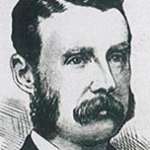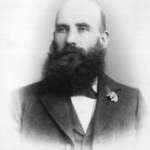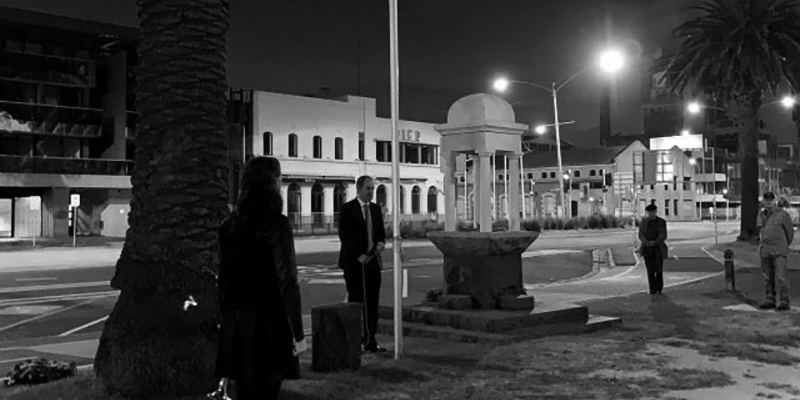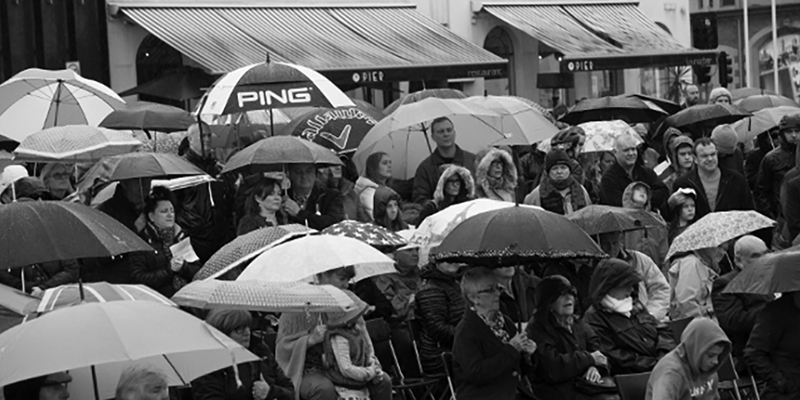Representing Port Melbourne
With the 2014 state election imminent, this post looks briefly at two very different people who have represented Port Melbourne:

Frederick Derham arrived in Melbourne in 1856. Following the death of his first wife, Ada, he married Francis Dodd Swallow, the daughter of his business partner Thomas Swallow. He became the managing director of the company in 1888 and the sole director when Swallow died in 1890. Derham was a prominent figure in the business community.
He became a member of the Sandridge Municipal Council and later mayor. In 1883 he was elected to the Legislative Assembly for Sandridge (Port Melbourne) and retained his seat until 1892. He introduced the penny post into Victoria as postmaster-general in the Gillies-Deakin ministry in 1886-1890. In politics he was conservative. He opposed any measures he saw as socialist in tendency. He was the founder and first president of the Victorian Employers’ Union which he saw as a body necessarily called into being in answer to the ‘ceaseless activities of the Labor Party’ and to check ‘rampant socialist legislation’.1
Derham’s fortunes rose with the boom of the 1880s and fell with the crash of the early ‘nineties. He planned a building fifteen storeys high on the north western corner of Elizabeth St and Flinders Lane – almost a skyscraper in those days. When the financial crash came, four storeys were taken off, but it remained the tallest building in Melbourne for 60 years.2

George Sangster represented Port Melbourne in the Legislative Assembly from October 1894 until his death in April 1915.
Sangster was born in Aberdeen. He settled in Sandridge where he lived in Nott Street while working on shore in Melbourne and at sea in Australian waters. At the age of 27, he became a foundation member of the Seaman’s Union in 1872 holding the office of president and secretary. He was also president of the Trades Hall Council in 1894-95. A dedicated socialist, he was unpopular among the conservative and business community.
Sangster was opposed to Federation and to the Boer War and to wars in general. He opposed the teaching of the bible in schools. He was a staunch anti-monarchist. He was supported by Port Melbourne voters for 20 years.
The electorate
Port Melbourne was created as an electorate in 1889, replacing the previous electorate of Sandridge which had been defined in this descriptive way
‘Commencing at the junction of the River Yarra and the Saltwater River; thence by the River Yarra to a point due south of the Gas Works; thence by a line south-easterly to a point on the shores of Hobson’s Bay, twenty chains more or less westward of the Battery ; thence by the sea coast and the River Yarra to the commencing point …’
The Port Melbourne electorate was abolished as an electorate in 1958 and merged into the electorate of Albert Park.
References
3 Australian Dictionary of Biography: Frederick Thomas Derham
2Cannon, M 1995 The Land Boomers: The Complete Illustrated History MUP
Keenan, T 2011 In Safe Hands: Presidents of the Port Melbourne Football Club Eucalyptus Press
Parliament of Victoria – Frederick Thomas Derham
State of Victoria 1858 An Act to alter the Electoral Districts of Victoria and to increase the number of Members of the Legislative Assembly thereof.



